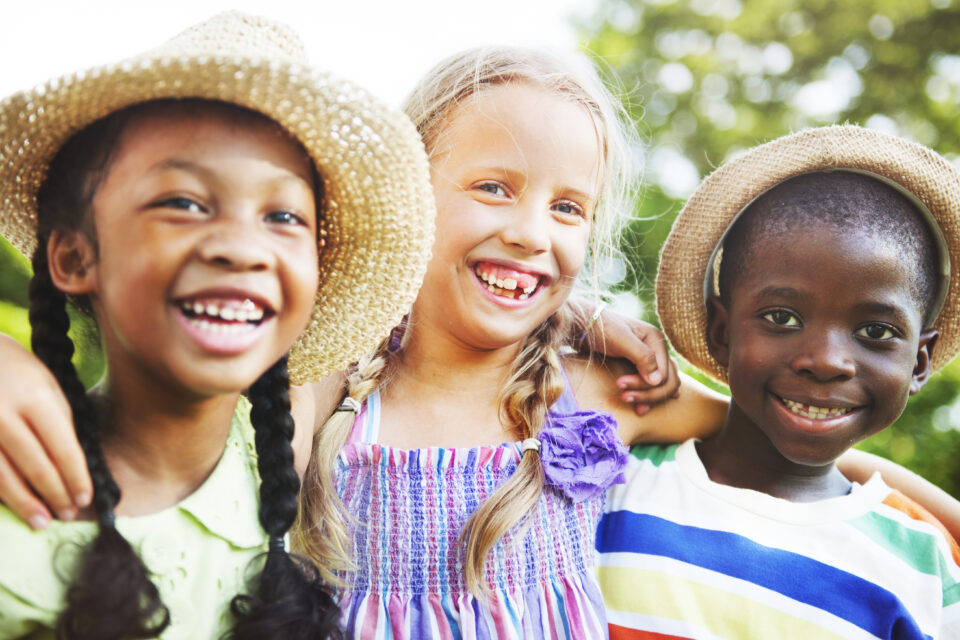July 1, 2020
How to open the dialog, keep it going, and make it age appropriate
Spring 2020 was all about adapting to COVID-19 constraints and teaching our children to safely quarantine, remotely learn, and then alleviating their loneliness and boredom. We answered their questions about public safety and did our best to keep them – and ourselves – emotionally well.
[button color=”blue” size=”normal” alignment=”center” rel=”follow” openin=”newwindow” url=”http://eepurl.com/gnPI_b”]Sign-up to receive our newsletter today![/button]
As national and international protests and outrage over the killings of George Floyd﹘and others﹘by law enforcement officers flood our televisions and social media, Summer 2020 is about communal introspection and reevaluation, and a new conversation about race and racism. And for parents, particularly non-black parents, if you already haven’t, this is the time to open﹘and keep open﹘the dialog with our children about race, equity, inequality, and social justice.
Jenni Evans, Program Manager and Parent Educator at The Parenting Center at Children’s Hospital New Orleans, gives us her input on the subject and how she speaks to parents who want to start the conversation.
“Feeling anxious is okay,” in bringing up the topic (as a parent), says Jenni, “But it’s important that we start the conversation without creating anxiety, and instead create curiosity. Remember, this is not a moment in time; it’s a topic that’s been here for 400 years. We don’t want to stoke the fear that children may be feeling, but to invoke growth. Do this in steps.”
First Step: Reflect on what your own thoughts and values are
– How is this topic affecting me now? Why am I uncomfortable?
– And how do I (as a parent) first move forward myself?
JE: “The lessons we all learned growing up in our childhood homes are stagnant now, although they were – or may have been – well-intentioned then. Where are we now?”
We have new language today
JE: “Instead of just saying, ‘I’m not prejudiced,’ it’s time to ask ourselves bigger questions about a society that is not working for everyone. It’s not just a matter of not being racist, but being anti-racist.”
Understand the implicit biases built into systems that are in our everyday actions
JE: “Biases are implicit in our everyday actions and are built into policies and systems we are using, from the police to businesses.”
It’s not enough to go at this with our same old opinions
JE: “We need to reflect about what we know – and what we don’t understand.”
Second Step: Read, learn, listen 
– Educate yourself.
– Listen to new information.
– Listen to people’s experiences.
– Read things about people of color, by people of color.
– Reevaluate your world.
Third Step: Bring the message to your child
– Understand the different stages of – and biases inherent in – a child’s development.
– And then make your readings, talks, and teachings age-appropriate for your child.
– Listen to and understand the questions your child is asking.
– Don’t overcomplicate your answers; keep your responses age-appropriate.
In explaining how to take the first steps in opening the dialog, Jenni mentions that studies have proven, Jenni Evans notes, “Children as young as six months recognize differences between people, so you cannot raise children to be color blind. They know there are differences.”
Evans explains that you should understand your child’s development. Because they do see the differences not only in gender but in race. So, as parents, we need to add information to those thoughts and recognize that the issue is complicated.
She adds, “To say you don’t notice race and are raising your kids to be color blind is problematic. By not recognizing – or failing to recognize – race, it normalizes whiteness and ‘others’ blackness.”
Being ‘color blind’ means going with the status quo
– Color blind stereotypes are evident in both overt and covert ways in our society.
– Color blindness allows whites to ignore racism and justify the established societal order.
– Color blindness for blacks negates their cultural heritage and perspectives, and their on-going negative experiences due to racial disparities.
JE: “If we don’t talk about differences (between people) like race, then we are saying the norm is the norm…which supports white privilege. By showing that differences have value, we open up our child’s world – for everyone.”
Take steps towards multiculturalism as an alternative to color blindness 
– A multicultural society celebrates cultural diversity and harmonious coexistence.
– All cultures are equally respected.
– Differences between races and their cultures are recognized and valued.
For infants and toddlers
– Don’t try to make race invisible.
– Help your child recognize ways that people are alike and different.
– Give value to both similarities and differences.
JE: “This becomes delicate sometimes. For instance, toddlers may point out people who they perceive as different, and that means any kind of differences, not only racial. If we hush them, in the name of being polite we send a message that the difference is not okay.”
Preschoolers
– This age is starting to group themselves and assign characteristics.
– Have diverse picture books around for them to look at and read.
– They’re starting to identify with the same gender or race.
– This age also are curious and invested in fairness.
JE: “As a parent, it’s important to help your child challenge stereotypes they may be absorbing (such as boys are stronger). Help them think about things, offer different perspectives. And name race, don’t avoid it.”
Pre-K and K
– Studies reveal that all children – white and other races – show preference for lighter skin, despite their own personal identification.
– Teach tolerance and develop positive attitudes about all races.
“Internalization of race is happening to all children at a very young age. So, by not initiating the conversation early, a parent is missing their window of opportunity to change the developmental bias that occurs. It’s important that parents talk about the differences – and valuing differences – and ask their young children questions. In these ways, they can challenge the stereotypes and biases that children gain through implicit and systemic ways.”
8-to-9-Year Olds
– By 3rd grade, children have firmly set racial attitudes.
– Maintain or increase, if necessary, exposure and participation in cultural experiences different from your own.
JE: “Experiencing other cultures by going to their festivals, or talking about their holidays, is educational but not likely to challenge bias or stereotypes. Instead, have your child participate in classes and join teams where different backgrounds are represented. Go to areas of your city that you have been unfamiliar with. Seek out teachers, mentors, and presentations from people of different backgrounds. Be intentional.”
Don’t go for the easy answers!
– Race and racial inequality is a complicated subject and not a moment in time.
– Parents need to model behavior for their child as they go through the day.
– Just because you’re uncomfortable with the subject is not a reason to brush it away.
JE: “From the age of three years all the way through the teen years, keep the dialog open. Say, ‘That’s a good question, let’s think about it.’”
JE: “If you don’t have an answer, don’t brush the question away. Be a reliable source for your child and find the right answer for them. And then discuss it with them.”
Mr. Rogers said, “What’s mentionable is manageable.”
JE: “What Fred Rogers meant by this is that if kids are allowed to talk about tough subjects and big feelings, then they can work through them. But if we cut kids off by saying ‘that’s not nice,’ or ‘that’s wrong,’ then they cannot process new information or learn new things. Stress to your child that it’s okay to talk to you as parents about their feelings about race and bias.”
And always remember…
– People are going to say the wrong things.
– You may say the wrong things.
– Parents and kids both say the wrong things.
– This is a time when the the community is asking us to grow.
– We need to recognize that this is a time for listening and growth.
JE: “Biases and prejudices make our world smaller. We want our world (and our children’s world) to be wide open and full of opportunities. Parents need to reflect and challenge their own thoughts about race and bias and differences, and do some listening and reading about what’s happening now, and recognize that change is important, regardless of our own background.”
[button color=”blue” size=”normal” alignment=”center” rel=”follow” openin=”newwindow” url=”https://www.nolafamily.com/opening-the-dialog-with-your-child-through-books/”]Open the Dialogue with Your Child Through Books! Click here to learn more.[/button]
We at Nola Family recognize that racial issues can be difficult to broach and discuss with your children. The topics of social injustices and racial discrimination can be fraught with emotion and be difficult to tackle, but it’s a conversation we owe our children, and ourselves.
![]() Trevor Wisdom is a native New Orleanian with a 26-year-old daughter who she raised as a single mom. You can reach her at trevor@nolafamily.com.
Trevor Wisdom is a native New Orleanian with a 26-year-old daughter who she raised as a single mom. You can reach her at trevor@nolafamily.com.


